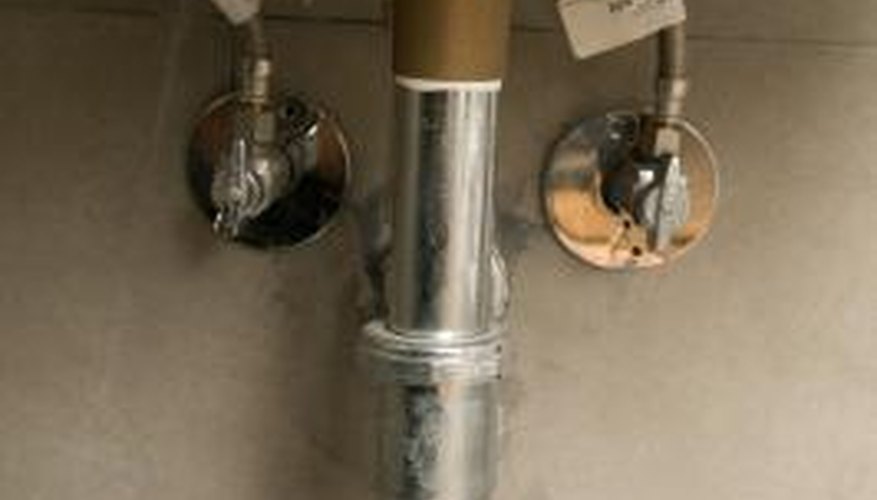Centipedes come into your bathroom seeking food and shelter. House centipedes (Scutigera coleoptrata) differ in appearance from garden centipedes, which have shorter legs. You may see house centipedes with differing numbers of legs as they moult and mature through several developmental stages. The many legs of these centipedes make their bodies look even longer and more intimidating.
Negative Attributes
House centipedes may be found both outdoors and inside your home. Centipedes are attracted to your bathroom because of the abundant moisture from sources such as the sink, tub, shower and toilet. Their speed and manner of movement can be frightening to witness, and the creatures are known to run directly at humans. House centipedes can cause painful bites if handled or injured.
- House centipedes may be found both outdoors and inside your home.
Attraction
House centipedes are attracted to dark, damp areas. They seek out moisture, arthropods and insects for food, and sheltered areas that offer protection. They may be found hiding beneath objects in your home and leaf litter outdoors. You may bring them indoors unknowingly on firewood, or they may come inside for shelter during cold weather. House centipedes may move upstairs from a crawlspace or basement to reach the warmer interior spaces within your home when outdoor temperatures drop or move from your home's exterior indoors, into a basement or around plumbing fixtures.
- House centipedes are attracted to dark, damp areas.
- House centipedes may move upstairs from a crawlspace or basement to reach the warmer interior spaces within your home when outdoor temperatures drop or move from your home's exterior indoors, into a basement or around plumbing fixtures.
Positive Attributes
House centipedes eat other annoying and damaging insect pests found in the home. Their prey ranges from silverfish and cockroaches to carpet beetle larvae. The presence of these centipedes may signal that you have a home pest issue. They may also provide an early warning signal of a moisture problem or leak.
- House centipedes eat other annoying and damaging insect pests found in the home.
- The presence of these centipedes may signal that you have a home pest issue.
Prevention and Treatment
Have your home checked and treated for any pests present. This will reduce the centipedes' food source. Seal any cracks, particularly around foundations, in walls and where plumbing enters the house. Install a dehumidifier to decrease humidity levels in areas where moisture is a problem. During warm weather months, evaluate the need for grading around your home's foundation. Proper grading of the soil will direct water away from your home, reducing the accumulation of moisture that may attract centipedes.
- Have your home checked and treated for any pests present.
- During warm weather months, evaluate the need for grading around your home's foundation.
Pesticides
Insecticide options to treat for centipedes come in spray and powder form. Dusts should be used in cracks and locations that will remain undisturbed and where pets do not have access. The Pennsylvania State University Entomology Department recommends the use of synthetic pyrethroids such as cyfluthrin, deltamethrin, lambda-cyhalothrin, cypermethrin, permethrin or tralomethrin to treat for centipedes. The Michigan State University Extension suggests using diazinon 25 per cent around foundations and exterior locations and chlorpyrifo or propoxur for treatment indoors.
- Insecticide options to treat for centipedes come in spray and powder form.
- The Pennsylvania State University Entomology Department recommends the use of synthetic pyrethroids such as cyfluthrin, deltamethrin, lambda-cyhalothrin, cypermethrin, permethrin or tralomethrin to treat for centipedes.
